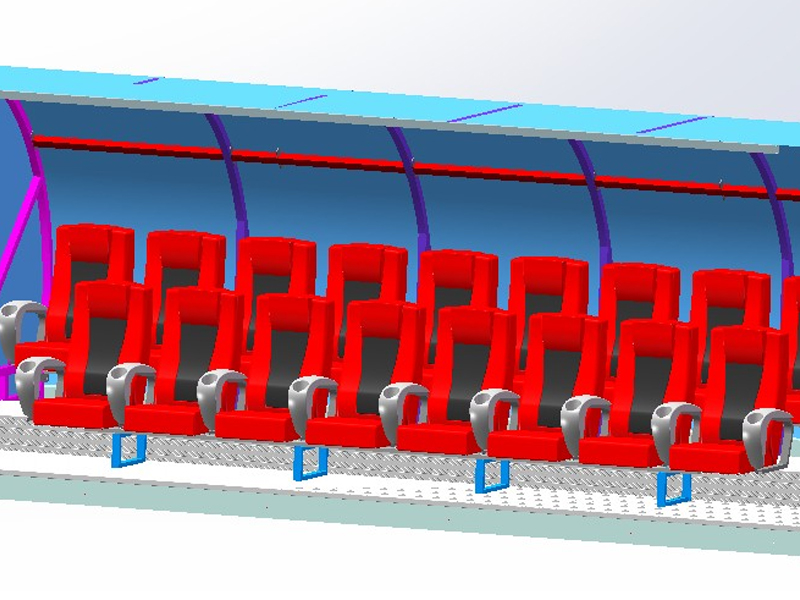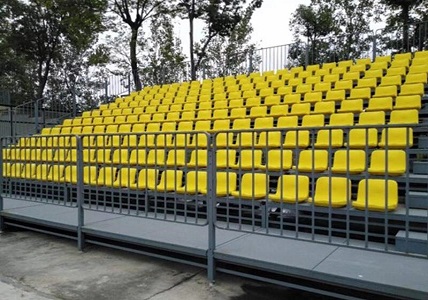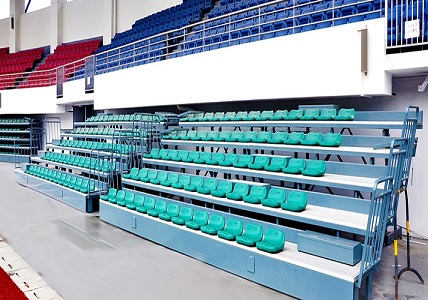
In stadium design, the arrangement of fixed spectator seating is a key factor in ensuring the comfort and safety of spectators while watching events. For large stadiums, it's essential to consider how to ensure the number of seating and viewing distances while meeting the safety evacuation requirements of the spectators. This article will explore the basic rules and influencing factors of the arrangement of stadium fixed seating.
When designing a stadium, the first consideration is the number of spectators it can accommodate. Since large stadiums need to hold a vast number of spectators, the arrangement of fixed seating becomes particularly important. In situations where many spectators gather, the design of stadium fixed seating must meet the requirement of rapid evacuation, to ensure that spectators can quickly and safely evacuate in case of an emergency.
Compared to multi-layered buildings like concert halls, stadium designs usually employ inclined stand layouts, with stadium fixed seating often angled to maximize the view for spectators. In emergencies, the continuous inclined aisles of stadium fixed seating enable swift evacuation, targeting the safety issues during large gatherings. Considering historical instances of violence or terrorist attacks in stadiums, ensuring the rapid evacuation capability of fixed seating can significantly improve the venue's safety.
Another issue to watch when designing is the excessive overhang of the stadium structure. The design of fixed spectator seating typically requires support for a large number of seating, thereby challenging the cantilever structure of the venue. Especially in densely seated areas, the overhang distance of seating is considerable, posing higher demands on structural stability.
Moreover, the design of the stadium must consider the excitement and behavior of spectators, such as cheering and jumping. As the event progresses, spectators' emotions can escalate, causing significant vibrations and sound waves. These forces can, in some cases, coincide with the building's natural frequency, affecting the stability of the venue. The design of stadium fixed seating must account for these factors to avoid structural issues caused by spectator activities.
Besides safety and structural requirements, the comfort and functionality of stadium fixed seating are equally important. Modern stadiums usually consider the comfort of spectators, such as the width of the seating, seat material, and distance between seating. Furthermore, the layout of stadium fixed seating should ensure that each spectator has a clear line of sight, avoiding any viewing issues due to poor seat arrangement.
Many stadium designs also focus on arranging accessible seating, providing designated seat areas for disabled individuals. Additionally, the design of the seat area pathways should ensure that spectators can easily enter and exit without disturbing others. Fixed spectator seating is not just part of the stadium but are crucial facilities that provide an excellent viewing experience for every spectator.
The design of the arrangement of stadium fixed seating needs to consider numerous factors, including spectator capacity, safety evacuation, structural stability, comfort, and functionality. Every design decision directly affects spectators' viewing experience and safety. With continuous advancements in stadium design technology, future fixed spectator seating will increasingly emphasize humanization, comfort, and safety, creating a more enjoyable viewing environment for spectators.






